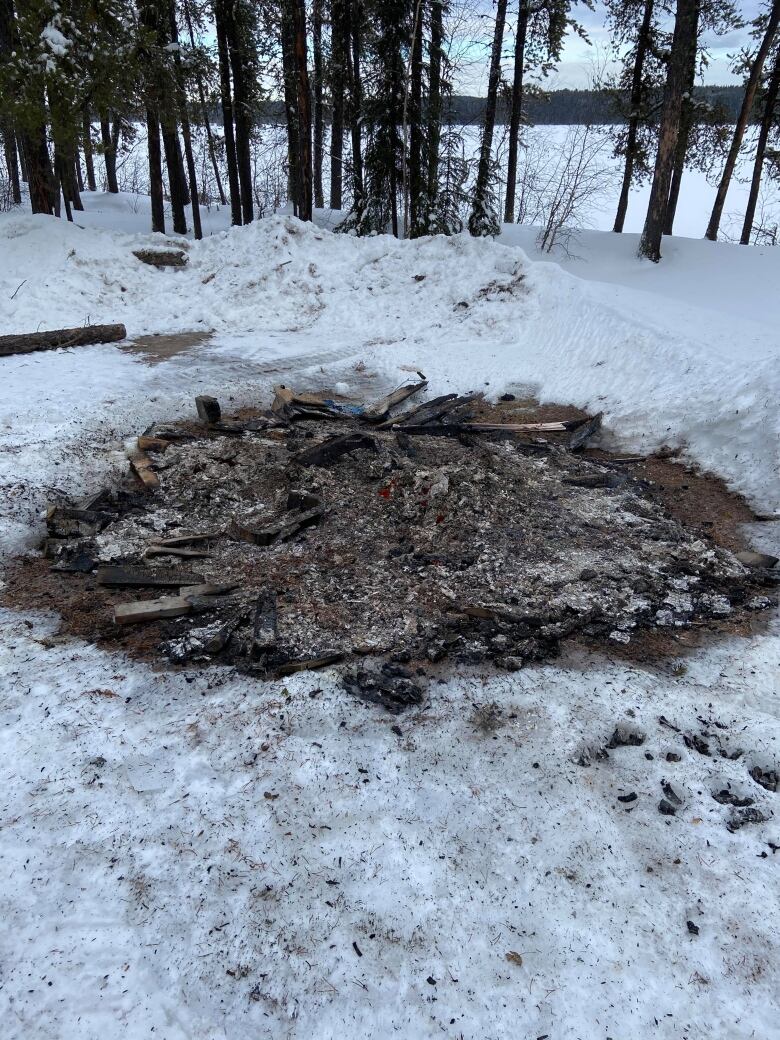Sask. government removes northern trapper's cabin

A northern Saskatchewan man has questions after his trapper’s cabin was removed by the provincial government last week.
Up until last Tuesday, Richard Durocher’s cabin was situated along Highway 914, about 40 kilometres north of Pinehouse and approximately 400 kilometres north of Saskatoon.
Durocher said he learned what was happening when he started getting calls from people who were seeing the cabin being hauled down the highway.
“I just kind of feel sad about that because I thought the treaty people had rights. But I guess I was wrong,” Durocher said.
Durocher, a registered trapper and a member of the Lac La Ronge Indian Band, applied to build a traditional resource use cabin on that site in the fall of 2016, but was denied.
He said he was warned by the government not to build it there, but decided to proceed anyway after talking with local Métis officials.
“At that time, the Métis were talking about taking back their land,” he said. “So I went to Métis leaders in the area and they told me, ‘Go ahead and build it because we have rights. We’re going to take our land back.’
“So I went ahead and built it.”
Durocher said he felt further encouraged to build a cabin there during a traditional land-use mapping project in the Pinehouse area.
“They asked all the trappers to come and write down everything — where they trapped and where they were living off the land,” he said.
“So that’s part of my trap line there and [I was told], ‘You could build a cabin anywhere you want. There’s nothing anybody could say.’ But I guess they were wrong.”
Durocher said he has traps in that area, but he hadn’t been able to get into his cabin for most of the last year because it was locked with a padlock.
“I was trapping there when they locked it last spring and I continue trapping there, as I speak,” he said.
Province receives complaints
Saskatchewan Environment responded to a CBC News request for comment through a statement.
It said the ministry has been attempting to work with Durocher since the fall of 2016, adding he was requested to select an alternative site.
“After the unauthorized cabin was constructed, the ministry began receiving numerous complaints from other users, mostly local, about having their ability to access the site restricted, both summer and winter,” the ministry said.
It said the site is “popular with other users for camping, fishing and other recreational activities.”
“Over more than three years, the ministry’s efforts to work with the individual to bring the cabin into compliance have been unsuccessful, ultimately resulting in the lawful removal of the structure,” the statement said.
It also said no cabin developments are allowed within eight kilometres of either side of the Key Lake, Cigar Lake, McArthur Lake, Cluff Lake and Rabbit Lake roads.
“This buffer was requested by local communities when these roads were built, to limit development along the new roads,” it said.
Recreational use vs. traditional use
Durocher said he doesn’t know who the other site users are or who complained — but said that specific issue came up in a previous conversation with a ministry official.
“He said the white man have rights to come and camp and that’s where they camp,” he said.
“And I said, ‘You know, 10 kilometres [away] — that’s Gordon Lake, it has a campground. That’s where they’re supposed to be at.’
“But he said these guys have been staying there for 10 years. So they have a right, he told me. So I disagree with that.”
When asked if the cabin’s former site is a serviced camping area, the ministry said it is not a formally designated recreation site and there are no services provided.
The site is within 50 metres of both a body of water and the highway.
Métis Nation-Saskatchewan President Glen McCallum, who is from the Pinehouse area, said the Durocher and Lariviere families have used that land for trapping and other traditional activities since well before the highway to the Key Lake mine site was built.
“So for somebody to say recreation compared to traditional land users, somebody has missed the mark in regards to how to be able to play out this respect that we need to have and understanding the history,” McCallum said.
He said people have lived off the land in northern Saskatchewan for thousands of years and that needs to be respected.
“In regards to recreational users and traditional users, when traditional users have used the places that they are building their cabins for many years, they have every right to be able to keep on using their grandfather’s or their father’s territory in sustenance use,” he said.
Fate of cabin not disclosed
Meanwhile, Durocher said he doesn’t know what became of his cabin, adding it had a bed, blankets and a cast iron stove when he was last inside it.
A government spokesperson said “the cabin and contents were seized and are forfeited to the Crown”, but couldn’t provide its current location.



